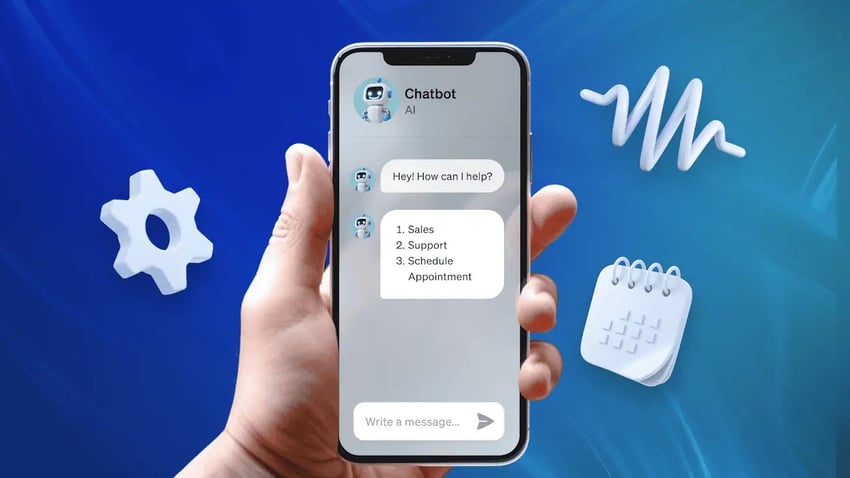Picture this: you’re dining at a restaurant where each server interacts with customers in a different way. One shouts across the room, another scribbles notes at the table, and another uses a mobile app. In the kitchen, line cooks must scramble to keep up, switching between systems just to deliver a single meal.
The result? Slow service, mixed-up orders, and frustrated customers.
This type of chaos is exactly what happens when businesses operate without a customer engagement platform (CEP). Communication channels are disconnected, customer data gets trapped in silos, and the overall experience becomes inconsistent—tanking satisfaction scores and loyalty in your brand.
In this guide, we’ll go over what a customer engagement platform is, why it matters, their key capabilities, and the top five platforms.
What Is a Customer Engagement Platform?
A Customer Engagement Platform (CEP) is a unified software solution that enables businesses to manage, personalize, and track customer interactions across all communication channels. Think of it as a command center that brings together the functions of a customer relationship management (CRM), help desk, contact center, and marketing automation platform into one place.
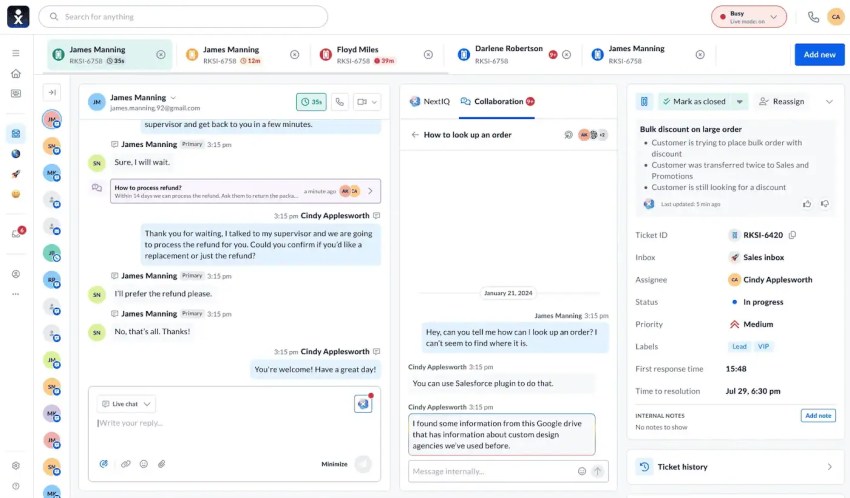
At its core, a customer engagement platform gives businesses a complete look at every customer to make sure that interactions are consistent and personalized—whether a customer reaches out via email, social media, chat, SMS, or mobile app.
Why it matters
Today, customers expect to talk to brands on their channel of choice and at a time that suits them. By unifying communication and data, it helps teams deliver better experiences.
A customer engagement platform makes this possible by:
- Reducing silos between teams and tools
- Providing consistent, branded cross channel experiences
- Allowing businesses to move from reactive service to proactive engagement
So having a customer engagement platform matters because it drives revenue growth, increases customer retention, and delivers an outstanding customer experience by easily connecting businesses and customers across all touchpoints.
Where engagement happens (channel examples)
A customer engagement tool doesn’t just unify communication, it supercharges the most important customer channels, such as:
Email → Personalized campaigns, targeted offers, triggered follow-ups. Email marketing delivers a 4,200% ROI, and personalization can boost open rates by 26% and revenue by up to 760%. With a CEP, your team can launch tailored campaigns from CRM data and cross-channel user behavior. Example: a customer “likes” a product on social media, and you send them a promo code when it goes on sale—driving engagement and conversions.
Social media → Real-time listening, community building, brand advocacy. Ninety percent of users follow at least one brand. A CEP enables social listening and direct engagement from one dashboard, helping your team respond instantly, nurture communities, and turn followers into advocates.
SMS & messaging apps → Alerts, reminders, delivery updates, two-way conversations. In 2024, 79% of consumers opted into business texts, with 81% checking them within five minutes. A CEP centralizes SMS and app messaging (WhatsApp, Twilio, etc.) for urgent updates, appointment reminders, and password resets—making direct communication fast and manageable.
Mobile apps → Push notifications, loyalty programs, in-app support. A CEP boosts the ROI of your app with personalized promotions, in-app messaging, and loyalty incentives—all improving customer engagement.
Web chat & chatbots → 24/7 support, FAQ handling, escalation to agents. Few companies can staff nonstop support, which is why AI is projected to drive 95% of customer engagement by 2025. Chat tools offer real-time customer support, answer FAQs, guide users to a self-service knowledge base, and free up agents for complex cases.
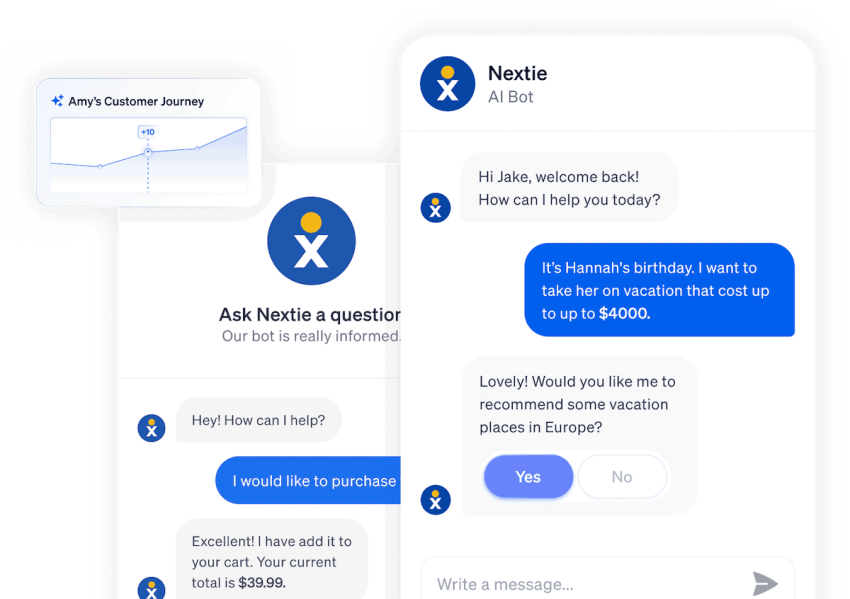
Key Capabilities of a Customer Engagement Platform
The best CEPs offer a comprehensive suite of functionalities and integrations. Customer engagement software equips your team to deliver exceptional experiences that elevate your entire customer strategy.
Omnichannel support
In a multichannel ecosystem, the different channels (phone, email, social media, etc.) operate independently, leaving your teams in the dark about what transpires in each silo.
Omnichannel customer service unifies and integrates the customer journey so that every interaction, regardless of the chosen device or communication channel, feels like a continuation of the previous one. Agents can instantly see a customer’s history—tickets, messages, purchases—so they never have to ask customers to repeat themselves.

More meaningful, personal customer interactions are gold for your business, considering that:
- 60% of consumers have higher customer expectations for service and support than they had a year ago.
- Two-thirds think the most important thing a company can do to provide a good customer experience is value their time.
- 76% will stop doing business with a company if they have just one bad experience.
Customer data platform
Data is king. In unified customer experience management, the more first-party data your business collects from your CRM software and other channels, the more relevant and personalized your customer engagement strategies.
A customer engagement platform integrates customer data platforms to provide a centralized data source. Everything from your customers’ demographics and purchases to their website behaviors and chatbot transcripts creates a holistic customer profile.
This 360-degree view empowers your team to understand your customers on a deeper level, personalize customer communications, anticipate customer needs, target marketing campaigns more effectively, build lasting customer loyalty, and more.
Personalization
McKinsey research reveals that 71% of consumers expect companies to deliver personalized interactions, and 76% get frustrated when this doesn’t happen:
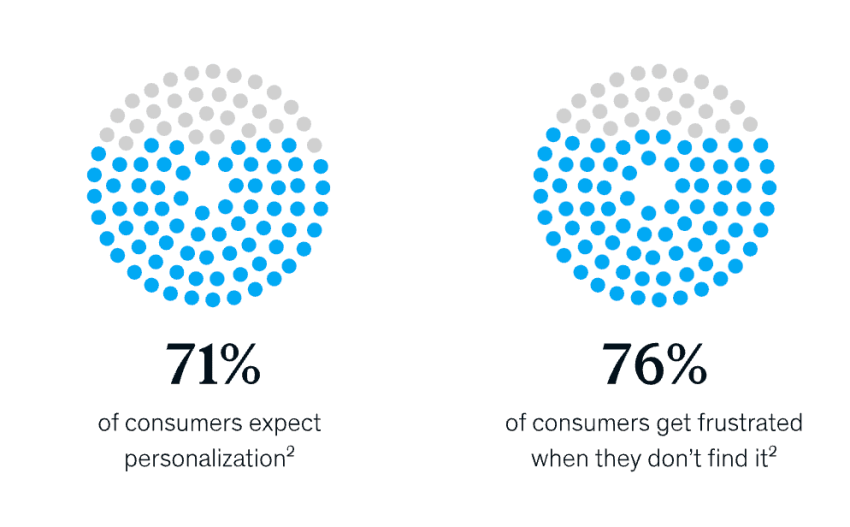
Leveraging a customer engagement platform gives your team a unified customer view to better understand each customer as an individual. You can send personalized push notifications for new product recommendations, discount codes via SMS on their birthday, etc.
Automation and AI
Automation and AI are the driving force of modern businesses. These tools enable humans to get more done and play to their strengths. For example:
- Productivity: Repetitive tasks bog down your team’s productivity. AI and automation tools can take tasks like sending welcome emails, appointment reminders, abandoned cart notifications, review requests, etc., off your team’s plate.
- Customer support: Chatbots and automated responses are a lifesaver for customer support teams, as they can handle basic requests, intelligently route customers to the best agent for their needs, and automate follow-ups with customers.
- Customer engagement: Marketing automation can engage customers based on where they are in their journeys using data collection/interpretation, real-time customer insights, and suggested actions.
These automations help you turn website visitors into email subscribers or send automatic surveys after customer interactions to gauge sentiments.
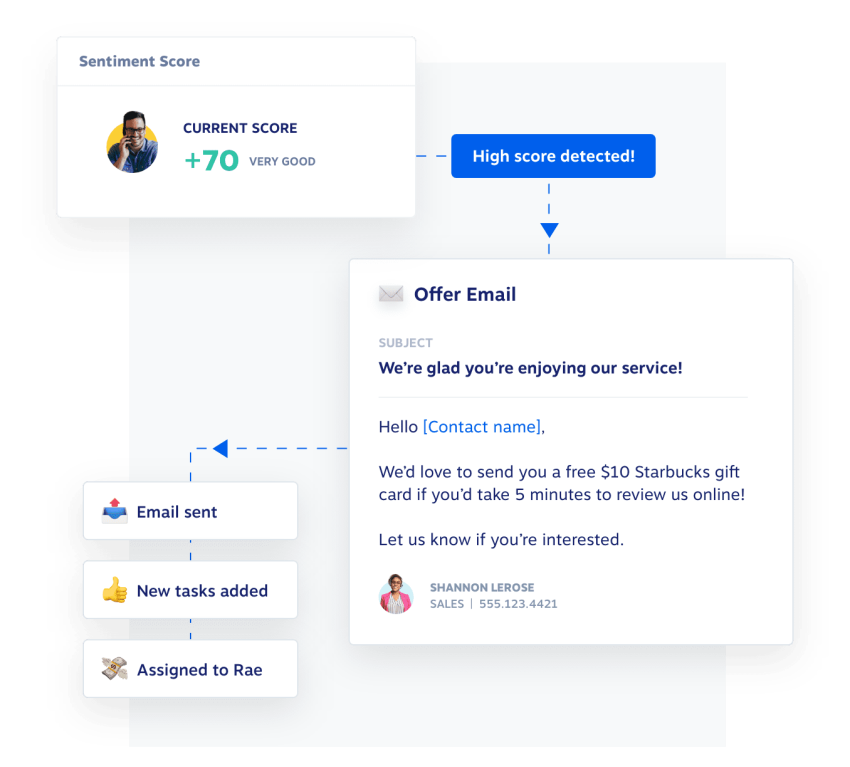
Customer journey mapping
You can’t craft an exceptional customer experience without understanding the path your buyers take—from initial brand awareness to purchase and beyond. Customer engagement software makes it easy for your team to visualize and analyze customer interactions across all touchpoints in this journey.
This high-level overview and newfound clarity give your team the ability to:
- Pinpoint roadblocks: Identify areas for improvement and friction points that hinder progress in the customer lifecycle.
- Discover engagement opportunities: Uncover moments within the journey where you can proactively engage with customers to foster loyalty and advocacy.
- Craft targeted communication: Tailor your communication strategy to meet specific customer needs at every stage. Develop targeted messaging templates based on common product/service use cases, equipping your team to deliver exceptional service consistently across channels.
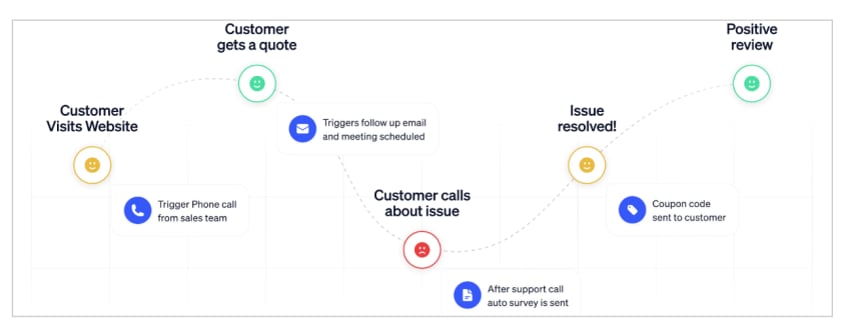
Analytics and reporting
A customer engagement platform provides access to real-time customer engagement metrics. You can monitor user behaviors, campaign performance, resolution times, and your team’s overall effectiveness.
Use these insights to improve weaknesses, get ahead of issues, and optimize your engagement strategy to grow revenue and improve retention.
5 Best Customer Engagement Platforms
These five customer engagement platforms stand out for their strong integrations, advanced analytics, and ability to drive meaningful customer interactions.
Nextiva
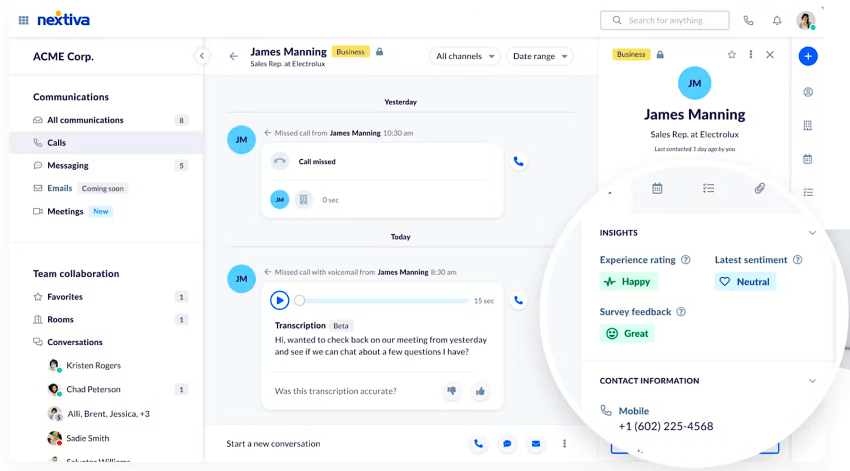
Nextiva is an all-in-one communications and engagement platform designed for businesses that want a single hub for voice, video, SMS, email, live chat, CRM data, and analytics. Its AI-driven tools help personalize interactions while keeping customer data connected across channels.
Key Features:
- Centralized, omnichannel communications across voice, video, chat, email, and SMS
- In-depth customer analytics and reporting
- AI and automation for chatbots, intelligent routing, and proactive support
Salesforce
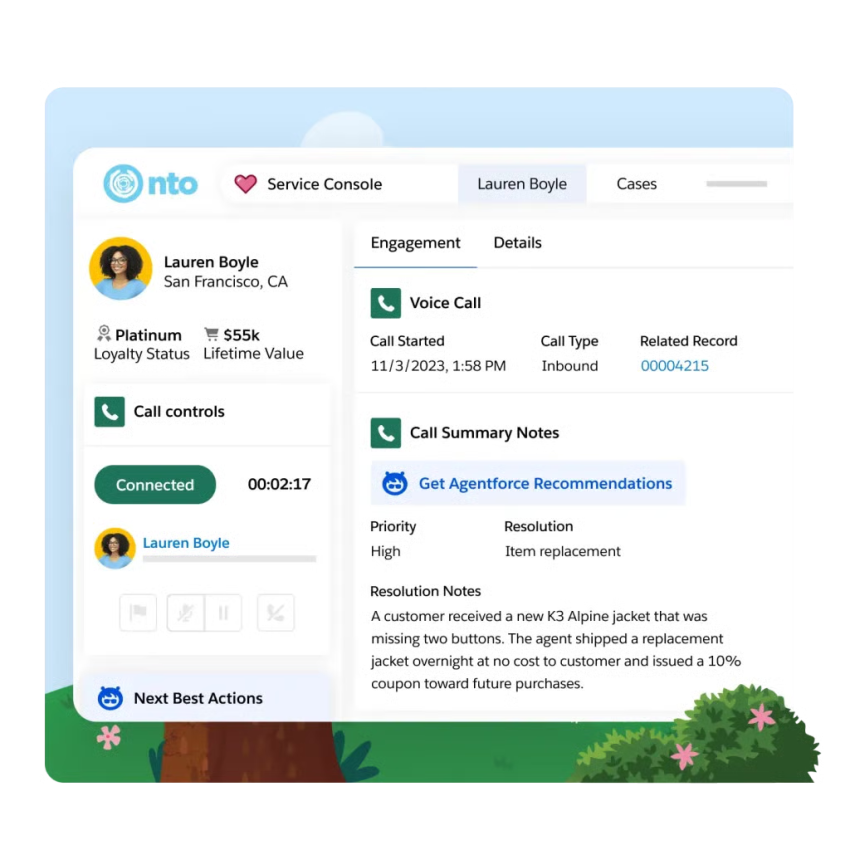
Salesforce is best known for its CRM, which also serves as a foundation for customer engagement.The platform is designed for organizations needing omnichannel capabilities and advanced customization and cross-channel engagement.
Key Features:
- Omnichannel support (phone, chat, email, social)
- Flexible automation and workflow customization
- Wide-ranging analytics and reporting with CRM integration
Intercom
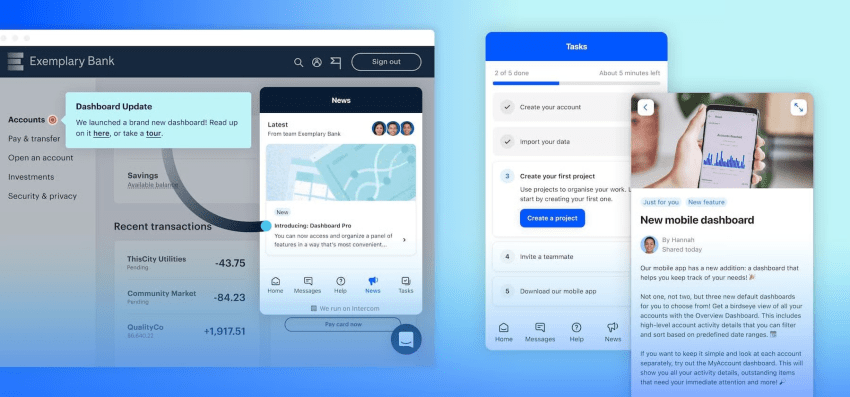
Intercom specializes in conversational customer engagement, combining live chat, bots, and in-app messaging. It’s ideal for companies that want to provide real-time, customized support and guided onboarding.
Key Features:
- Real-time live chat and in-app messaging
- Customizable chatbots and automation workflows
- Behavioral targeting and customer segmentation tools
HubSpot
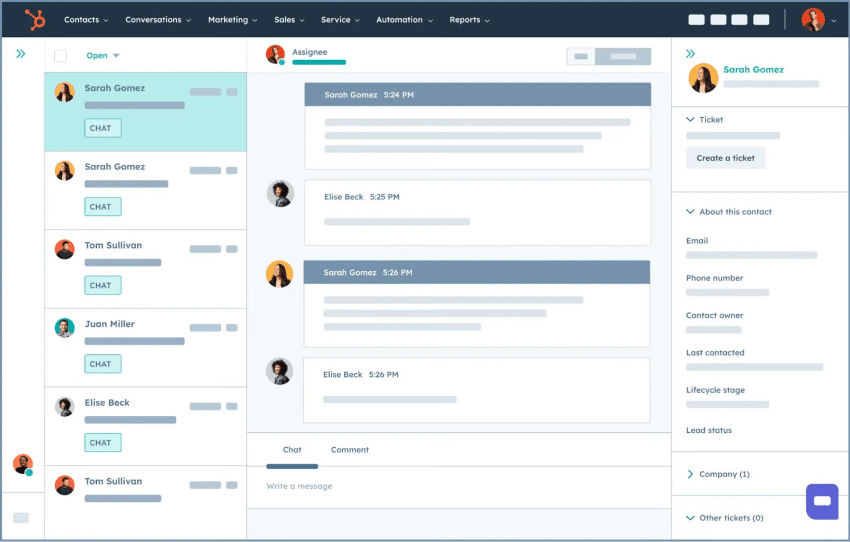
HubSpot combines marketing, sales, service, and content management into one ecosystem. Its platform helps businesses streamline customer experiences with automation, feedback tracking, and built-in analytics across departments.
Key Features:
- Email campaigns and marketing automation
- Service ticketing and customer support tools
- Integrated reporting and analytics across the CRM
Zendesk
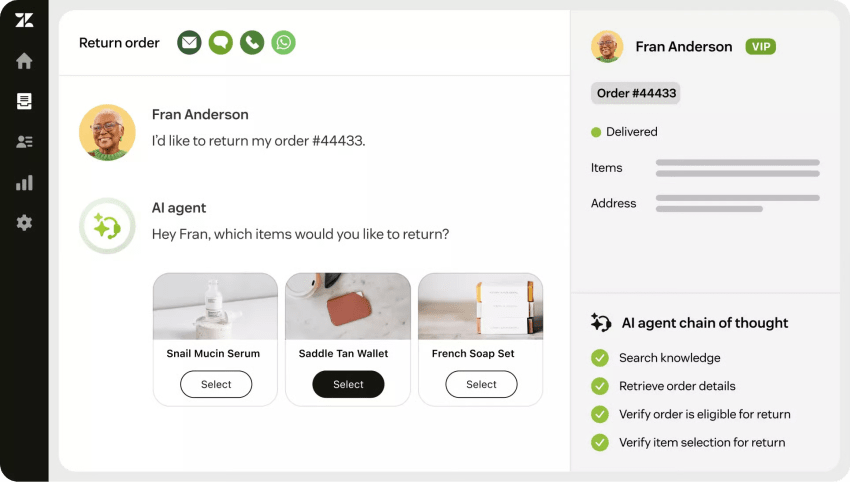
Zendesk is a customer service platform focused on omnichannel support and self-service. Its intuitive tools and highly customizable interface help businesses scale support while tailoring interactions through automation and analytics.
Key Features:
- Omnichannel customer support (phone, chat, email, social)
- Comprehensive knowledge base and self-service options
- Advanced ticketing and customer support workflow automation
How to Implement a Customer Engagement Platform Effectively
Implementing a customer engagement platform is more than just turning on a new tool—it requires planning, alignment, and adoption. To do it successfully, a business should follow these key steps:
- Assess and Define Objectives. First, evaluate existing systems and processes to understand integration needs. Clearly define business goals and what the CEP should achieve, such as improving retention or enhancing personalization.
- Select the Right Platform. Research and choose a platform that fits business requirements, integrates well with existing tech stacks, and aligns with your budget and scalability needs.
- Audit and Prepare Your Data. A CEP relies on clean, connected data. Audit existing systems (CRM, helpdesk, marketing automation) for duplicates, gaps, or outdated info. Standardize formats and integrate key data sources before migration to avoid errors later.
- Plan Integration and Data Unification. Develop a detailed plan for integrating the CEP with current systems, focusing on unifying customer data from multiple sources to create a single customer view.
- Design and Test Workflows. Design customer engagement workflows based on behavior triggers, conditions, and actions. Implement and rigorously test them to ensure smooth operation and identify areas for improvement.
- Train Employees and Roll Out. Provide comprehensive training for relevant teams on using the platform and new processes. Plan the rollout carefully to minimize disruption and encourage adoption.
- Monitor, Analyze, and Optimize. Continuously monitor platform performance and customer engagement data to refine strategies and workflows. Use insights for ongoing optimization to maximize ROI and customer satisfaction.
- Encourage Collaboration and Feedback. Ensure cross-functional teams collaborate on using the CEP and regularly collect and act on customer feedback to build loyalty and improve experiences.
Following this structured approach supports a successful CEP implementation that enhances customer engagement, improves business outcomes, and drives sustained growth.
What Benefits Does a CEP Offer Companies?
A customer engagement platform supercharges your customer engagement strategy, driving the following measurable results. Here are the top benefits to drive customer engagement.
Enhanced customer satisfaction
Customers crave a sense of connection — they want to feel seen, appreciated, and respected. So, imagine being able to anticipate customer needs before they even arise, resolve issues efficiently with real-time support, and nurture stronger relationships through personalized interactions.
These perks lead to significantly improved customer satisfaction scores. That’s the power of a CEP in action!
Nextiva’s CX plug-in also clues your team into the moods of prospects and customers. Real-time alerts from conversations help you predict which customers require immediate attention, fostering a proactive approach to customer happiness.
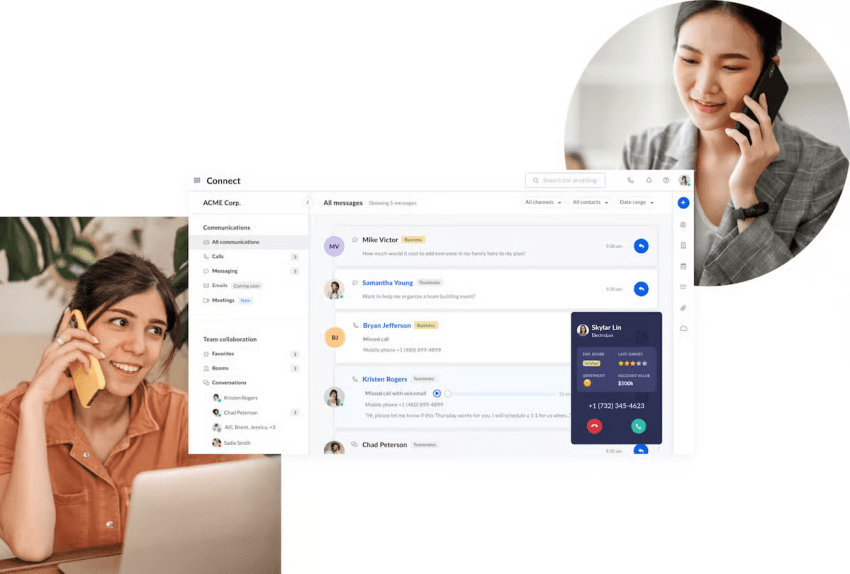
Improved customer retention
Continuous personalized interactions and prompt issue resolutions help you manage customer relationships far better. This may be why:
- Companies with strong omnichannel customer engagement strategies retain an average of 89% of their customers, compared to 33% for those with weak omnichannel strategies.
- Increasing customer retention by just 5% can boost profits by up to 95%.
All this translates to significantly lower customer acquisition costs for your business, increased customer lifetime value, and a higher, more predictable revenue stream.
Increased revenue
CEPs are money-printing machines.
First, they help your team provide targeted content and automate follow-ups to nurture leads and skyrocket conversion rates. Second, personalized product recommendations, relevant offers, and promotions drive repeat business and increase sales. Third, your loyal customer base becomes brand advocates, sharing positive reviews to expand your reach.
Stats show that companies with the strongest customer engagement strategies enjoy:
- 10% year-over-year growth
- 10% higher average order value
- 25% increase in conversions
- Up to 60% boost in revenue
Operational efficiency
A CEP consolidates customer data into a single platform, eliminating the need to manage multiple systems and reducing administrative burdens. It’s the ideal addition to your unified communications as a service solution, blending internet-based phone and messaging into a full-featured communications and engagement platform.
With AI-powered automations and workflows, your agents save time and resources while upgrading their productivity. They provide a higher quality of service and focus more on high-value interactions.
Your business also scores unmatched, budget-friendly scalability. Chatbots handle surges in customer inquiries, acting as a virtual extension of your support team, so you don’t need to increase headcount during peak hours.
Data-driven decisions
The right customer engagement tools unlock valuable insights hidden across your communication channels. A CEP becomes a central hub for analyzing and translating this data into actionable strategies. This centralized approach allows you to measure the ROI of your customer engagements over time.
You can see:
- Which channels resonate most with your audience
- Emerging user behavior patterns and preferences
- Which marketing campaigns drive conversions
- How customer support impacts customer satisfaction scores
Deeper customer insights equip your team to optimize strategies that maximize engagement with minimal risk.

Nextiva: One of the Best Customer Engagement Platforms
Rising customer expectations include consistent, connected interactions across every touchpoint. When communication channels are isolated, the result is frustration, inefficiency, and lost opportunities.
A customer engagement platform brings everything together. With a single dashboard, teams can manage conversations, track customer history, and understand the entire journey in one place.
The payoff is clear when you actively drive customer engagement: more productive agents, stronger customer relationships, and measurable revenue growth. If you’re looking for the best customer engagement platform, look no further than Nextiva.
Create an amazing customer experience.
Say goodbye to siloed conversations and hello to a unified experience. Engage on every channel with Nextiva’s platform for the best customer experience.

















 Customer Experience
Customer Experience 









